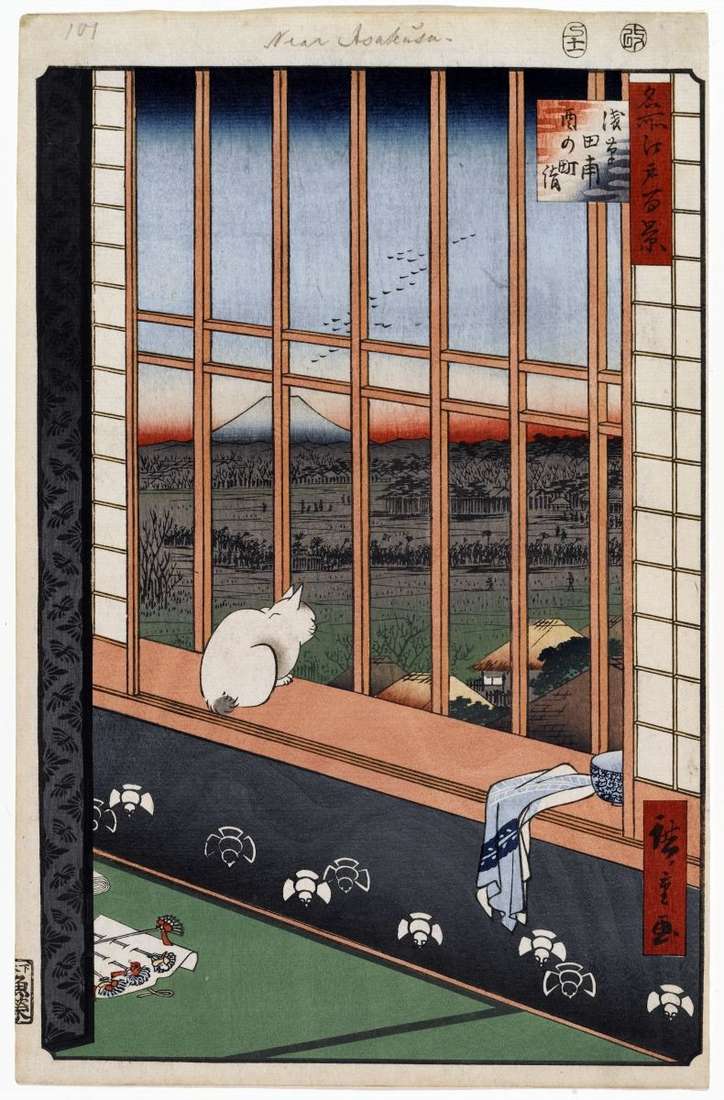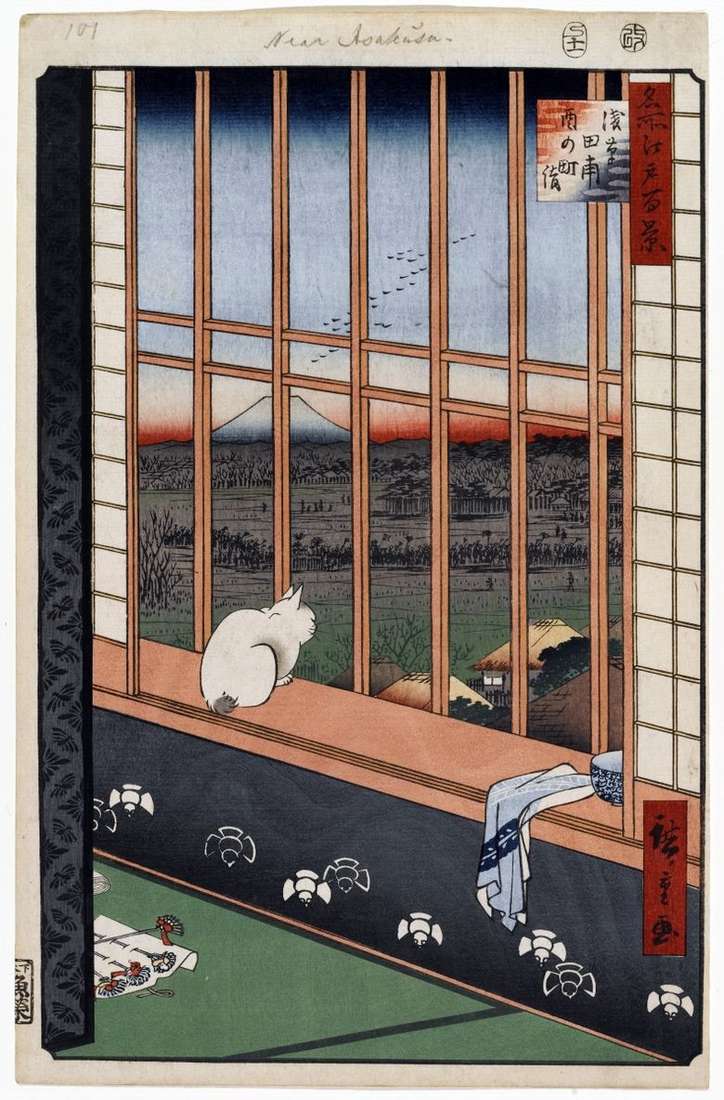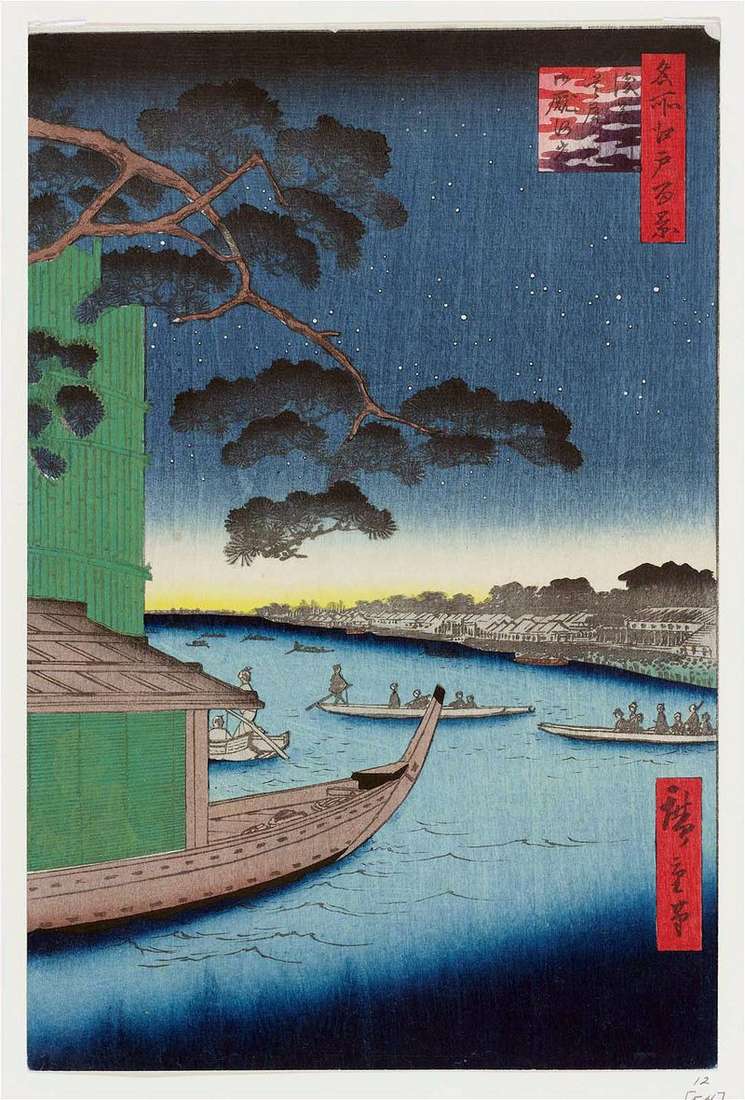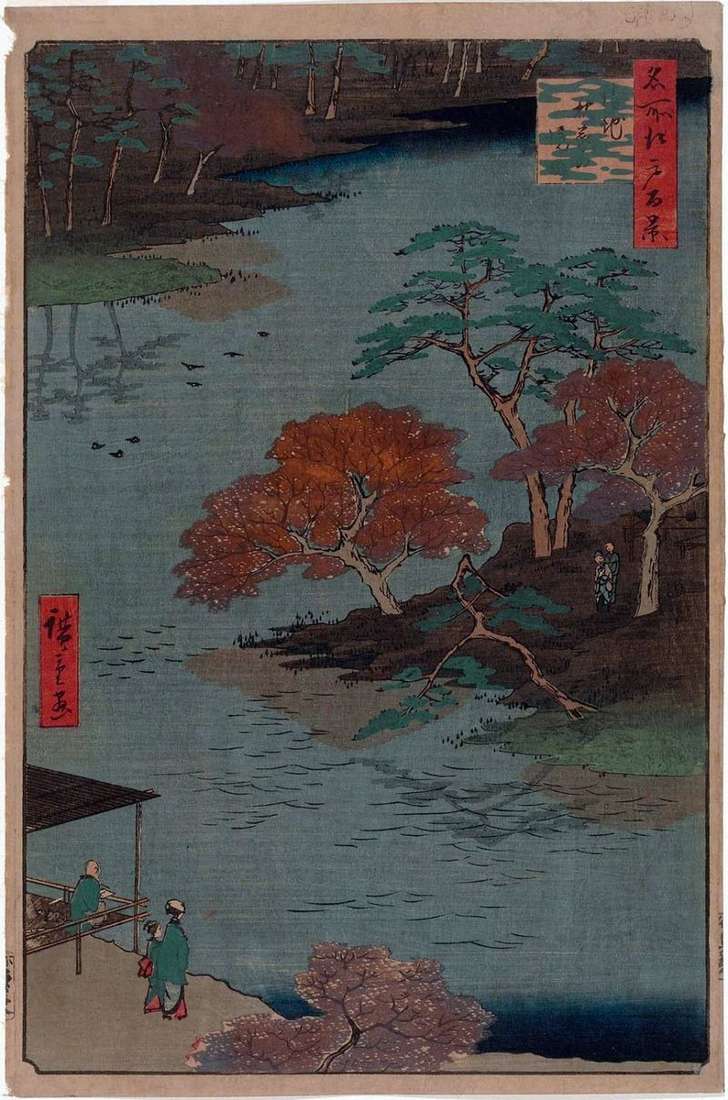
In the south-west of the Esivara quarter, among the rice paddies was the shrine of Vasidzinja, in which the deity in the form of an eagle was worshiped. One of the popular feasts of the sanctuary was Torinomati. The fair was held once a year on the first day of November – the day of the Chicken. This sanctuary was clearly visible from the windows of the quarter of Yesivara, in one of the living rooms of which the spectator appears. The sanctuary itself is on the left and is cut off by the edge of the leaf. A procession is sent to him, many carry long poles in the form of a rake-this is Kumade, they served as a wish for success and wealth. A cat without a tail, watching the procession.
Small kumada in the form of hairpins are depicted on the living room floor on the left. Their mistress, apparently, is behind a screen, the edge of which is decorated with a stylized image of birds. The pattern of the narrow strip under the windowsill is also symbolic, it is the image of the sparrow, in Edo they were called the sparrows of happiness, because they were considered a benevolent symbol. A regulars quarters called Esivara-sudzume. The overall color scheme of the engraving remains almost unchanged. In the late sheet the colors became brighter and more saturated. The color of the rectangular cartouche has also changed, it becomes three-color – red-white-blue.
 Festival du riz paddy Asakusa Torinomati – Utagawa Hiroshige
Festival du riz paddy Asakusa Torinomati – Utagawa Hiroshige Festival de Torinomati en los campos de arroz de Asakus – Utagawa Hiroshige
Festival de Torinomati en los campos de arroz de Asakus – Utagawa Hiroshige Dawn in the Esivara Quarter by Utagawa Hiroshige
Dawn in the Esivara Quarter by Utagawa Hiroshige The pilgrimage of Torinomati in the fields of Asakusa by Ando Hiroshige
The pilgrimage of Torinomati in the fields of Asakusa by Ando Hiroshige Pine Suube no matzo on the Asakusagawa River, the Ommayagashi Embankment by Utagawa Hiroshige
Pine Suube no matzo on the Asakusagawa River, the Ommayagashi Embankment by Utagawa Hiroshige The sanctuary of Akiba in Ukate by Utagawa Hiroshige
The sanctuary of Akiba in Ukate by Utagawa Hiroshige View from the hill of the sanctuary of Tenjin in Yusima by Utagawa Hiroshige
View from the hill of the sanctuary of Tenjin in Yusima by Utagawa Hiroshige The area of Susaki and Dzyumantsubo in Fukagawa by Utagawa Hiroshige
The area of Susaki and Dzyumantsubo in Fukagawa by Utagawa Hiroshige